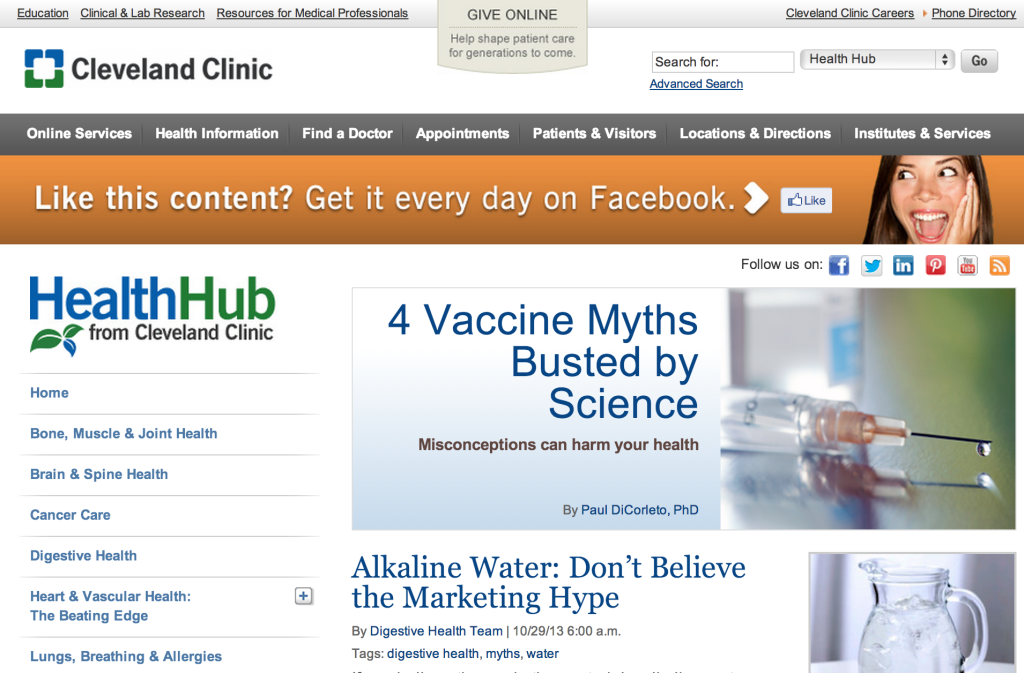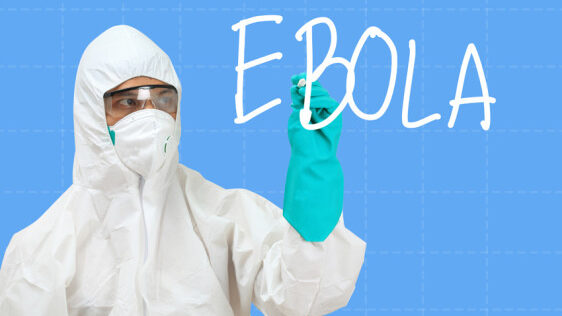The past few months have been a hypochondriac’s nightmare, with the spread of Ebola and the recent emergence of Enterovirus D68, a respiratory virus that is resulting in hospital admissions for many children. I wouldn’t call myself a hypochondriac, but you can be sure that I know all the symptoms associated with each of these and my kids washed their hands no less than 10 times at a birthday party last weekend (to be clear, my concern was obviously Enterovirus and not Ebola, but if I noticed someone vomiting, with a raised rash, who was also bleeding from their eyes…we were not staying at that party!).
Health crises such as these strike fear into the hearts of Americans, and naturally, capture more than their fair share of media coverage. It’s a time for health care organizations to step up, provide useful information, and position themselves as thought leaders. However, if you wait until the health crisis strikes to make a plan, you’re likely to miss out.
The good news is that the approach to becoming a resource during a health pandemic also supports an organization’s evolution to brand journalism, a strategy that centers on creating relevant content that you can own and share. Good brand journalism is not overtly promotional, but rather positions your organization as a thought leader by bringing good, objective content that people actually want to read.
So, what are some of the steps that are critical to preparing your organization to become a resource to the media and consumers-at-large during a health pandemic?
1) Create tools and build an audience before the crisis strikes. Brand journalism centers on owned content, such as a blog, videos, and articles. Who is doing it particularly well?
- The Cleveland Clinic’s Health Hub is a well-established consumer blog with timely
 content on a variety of health topics. In response to Enterovirus, Health Hub created this post, which features a Q & A with pediatric pulmonologist Giovanni Piedimonte, MD, Chairman of Cleveland Clinic Pediatric Institute and Physician-in-Chief of Cleveland Clinic Children’s Hospital.
content on a variety of health topics. In response to Enterovirus, Health Hub created this post, which features a Q & A with pediatric pulmonologist Giovanni Piedimonte, MD, Chairman of Cleveland Clinic Pediatric Institute and Physician-in-Chief of Cleveland Clinic Children’s Hospital. - Similarly, the University of Utah’s Healthfeed speculated on the spread of Ebola, utilizing the chief of its division of infectious diseases as an expert.
- Nationwide Children’s Hospital has created PediaCast, a regular podcast moderated by emergency physician Dr. Mike Patrick, who interviews experts from Nationwide Children’s Hospital on a variety of topics of interest to moms and dads. PediaCast has a companion blog, 700Children’s, which recently tackled Enterovirus.
2) Answer the question that everyone is asking. When it comes to a health pandemic, it all boils down to, “What’s my risk?” Help people assess their risk by anticipating relevant tools.
- There are now a number of iterations of the flu tracker tool, but WebMD’s Cold and Flu Map is a simple, visual version that helps users assess the spread of flu and cold in their region.
- Infographics like this one developed by HelloMD help to explain the risk of being infected with Ebola.
3) Inventory your organization’s expertise and prepare potential spokespeople. Brainstorm expected health issues, like cold and flu, as well as unexpected health crises and identify spokespeople within your organization that have relevant expertise and the potential to be mediagenic.
- Create a departmental tool for quick reference when an expert is needed.
- Conduct media training for your experts and make sure to practice at least a few times per year.
- Make sure experts are ready to address questions such as:
- Who has been affected?
- What are the symptoms?
- How does it spread?
- What is my risk?
- What should I do if I contract it?
- How do you treat it?
- What’s the prognosis?
- How has your organization prepared for this?
When a health pandemic strikes, it’s an opportunity for health organizations to demonstrate leadership and provide valuable information. With the rise of brand journalism, it’s easier now than ever before to elevate your organization’s experts to play this important role.

